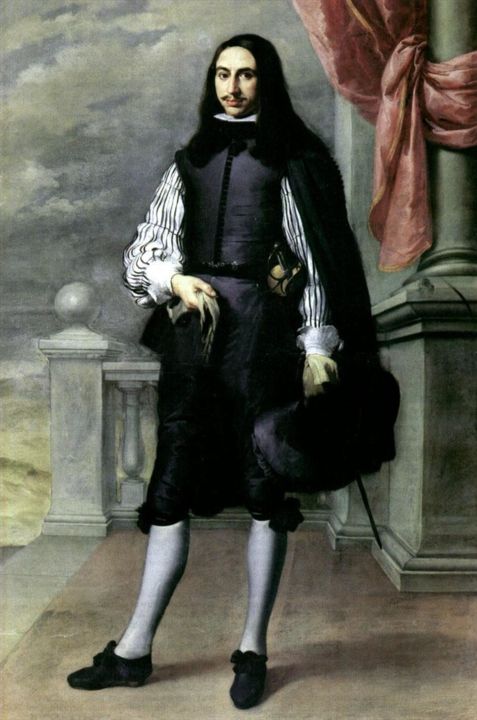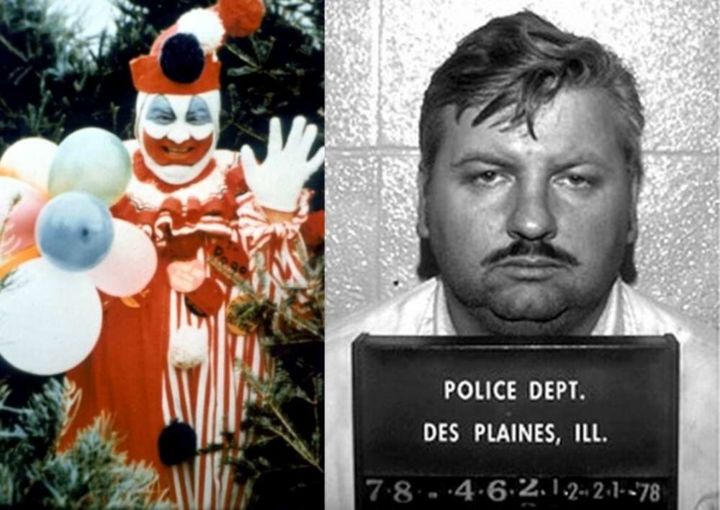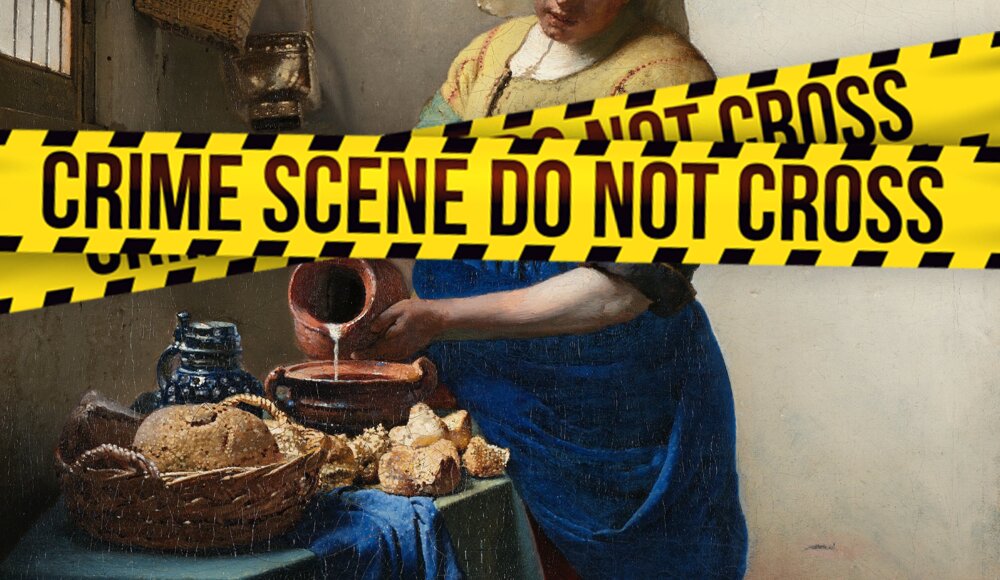1. Modern art as an instrument of torture
For this first story combining art and crime, we take you into an adventure both morbid and thrilling: when the Spanish counter-espionage services tortured opponents of Franco's regime thanks to modern art.
This story takes place from 1936 (beginning of the Spanish Civil War) to the end of the 1940s. Whereas at that time, in Germany, modern art pieces were removed from museums and labeled as Degenerate Art, in Spain, principles theorized by these young artists were used to torture political opponents.
Behind this strange idea there was a French artist (and sad looser) named Alphonse Laurencic. Initially detained in Spain for financial delinquency, he seduced the MIS (Military Information Service) in order to collaborate with them to design instruments of torture and prison cells of a completely new kind.
 Alphonse Laurencic. Cover of the book El Hombre de las Checas, Susana Frouchtmann.
Alphonse Laurencic. Cover of the book El Hombre de las Checas, Susana Frouchtmann.
Borrowing ideas developed by artists affiliated with Bauhaus school, he used the principles of geometric abstraction and surrealism to conceptualize psychological torture cells. These secret prisons, called "Checas" were in some ways the dark side of avant-garde theories on color, light and their associations.
What do we find in these torture chambers?
In these narrow cells, there was obviously a bed: but it was inclined 20 degrees, so that when he began to fall asleep, the prisoner slipped and fell to the ground.
So why not sleep on the floor? Well... The floor was covered with a labyrinth of bricks placed on the edge at equal distances, preventing the prisoner from lying down, but also from sitting down and even walking straight.
 On the left, cover of the book Por que hice las 'Chekas' de Barcelona, 1939.
On the left, cover of the book Por que hice las 'Chekas' de Barcelona, 1939.
On the right, reconstruction of a prison cell of Laurencic, location unknown.
Walls were covered with geometric patterns inspired by Bauhaus, Wassily Kandinsky or Paul Klee. Green was predominant, because Laurencic believed that this dull color created a heavy feeling of melancholy and sadness for the viewer. To disorientate the victim even more, he imagined many other stratagems mixing art and mechanics, such as morbid premises of kinetic art. For example, he used repetitive flashing lights to destabilize the prisoner's vision. Mixed with abstract geometrical patterns, this flickering quickly made people lose their mind.
And if that wasn't enough, there was also a clock in these cells. Their hands were set to circle the dial in 20 hours. After a few days, the prisoners logically lost all notion of time and space. For the most recalcitrant, Laurencic had also imagined an auditory torture, forcing the prisoners to listen to the repetitive noise of a metronome amplified at different speeds.
 Archive images of Laurencic's cells in Zaragoza Street, Barcelona (1939).
Archive images of Laurencic's cells in Zaragoza Street, Barcelona (1939).
It's hard to imagine the nauseating atmosphere that reigned in these suffering rooms. Unfortunate opponents couldn't hold out much longer: they fell down from fatigue, illness or went mad. All of them ended up confessing. Confess what? Anything and everything, but especially what their torturers wanted to hear.
A very sad reappropriation of the rules of modern art. While the Bauhaus aspired to use this technical knowledge to create functional and aesthetic spaces, Laurencic did exactly the opposite. He died shot on July 9, 1939, at the age of 37.
2. A crime behind one of the Louvre's greatest masterpieces
Did you know that behind one of the Louvre's greatest masterpieces, Murillo's The Sevillian gentleman, there's a blood-curdling story?
 Bartolomé Estéban Murillo, The Sevillian Gentleman, 1659. Louvre Museum, Paris.
Bartolomé Estéban Murillo, The Sevillian Gentleman, 1659. Louvre Museum, Paris.
First of all, it's the story of Suzanne de Canson, one of the wealthiest heiresses in France. Her family has made a fortune since the 18th century thanks to the business of drawing paper of the same name. Her father was a famous collector of various kinds of paintings and antiques. In 1958, when he died, Suzanne and her sister each inherited half of the family fortune, which is now estimated at more than 75 million euros. Most of the inheritance consisted of works of art and antiques, but it also included a painting of particular value: The Sevillian Gentleman, by the Spanish artist Bartolomé Esteban Murillo, estimated at more than 20 million francs at the time (3 million euros). The two sisters refused to sell it, considering its sentimental importance, and promised to keep it forever in the family estate.
As a curious breach of their engagement, today, this artwork is in room 718 of the Louvre. But what happened? Hang on because the life of a rich heir sometimes holds some painful surprises. We'll explain:
Thanks to her family's immense fortune, Suzanne has been living high life since her youth. At the age of 18, she separates from the man she was supposed to marry to settle down with a certain Laurence, with whom she lived for 37 years. Her assumed homosexuality wasn't unanimously accepted by her conservative family, who gradually distanced themselves from her.
 On the left, Suzanne de Canson. On the right, her sister Jeanne Deschamps in 1991.
On the left, Suzanne de Canson. On the right, her sister Jeanne Deschamps in 1991.
In 1980, Suzanne and her girlfriend separated. Laurence left the house with several works of art (of which the Murillo was not part), and to solve these legal complexities, Suzanne called upon a lawyer: Robert Boissonnet. This one quickly gets closer to the septuagenarian heiress, acquires her confidence and is even entrusted with the management of her patrimony. He became her confidant, provided her with an imposing house and a "lady-in-waiting" named Joelle Pesnel.
Poor and ambitious, Joelle Pesnel is a failed artist with an oversized ego. Her relationship with Suzanne de Canson, rich and fragile, will quickly turn dramatic, as common sense would expect. Discreetly but surely, the lawyer and the lady-in-waiting will take advantage of Suzanne's senility to liquidate her movable assets. In order to avoid arousing the suspicions of the authorities and the rest of the family, they transferred various artworks and antiques via the Swiss border. There, they could simply sell the paintings discreetly. Unfortunately, this sordid story doesn't end there, and the life of the heiress turned into a real nightmare.
 Joëlle Pesnel during her trial in 1991.
Joëlle Pesnel during her trial in 1991.
When Suzanne de Canson died in 1986, at the age of 76, police searched the house she shared with her partner, Joelle. On the spot, it's the amazement: the officers discover living conditions of the heiress, looking more like detention conditions. We then understand that the poor woman was sequestered during long months, in a room without window nor light, with as only comfort a plasticized mattress in a corner of the room. She died of hunger, abandoned by her "companion" jailer, who left her to languish without respect, without hygiene and without pity. She died alone, in total anonymity.
Following these tragic events, the last Canson heiress, Jeanne, tried everything to bring justice to her sister and recover Murillo's artwork. Unfortunately, the multiple and obscure transactions surrounding this artwork made her task far too complex. The painting passed through Switzerland thanks to false documents, then other lawyers intervened to opacify the transactions until an aborted sale attempt by the English auction house Christie's, which openly lied about the artwork's provenance by agreeing to change the name Canson to Cansou. In France, the Louvre administration discovered that the artwork had been illegally exported and intervened to cancel the planned sale in London. The museum secretly negotiated the purchase of the artwork with Joelle Pesnel through the auction house, for the modest sum of 760,000 euros, whereas it was estimated at several million.
 Suzanne de Canson, photographed a few months before her death.
Suzanne de Canson, photographed a few months before her death.
A scandal ensued in the hushed world of the art market: The Louvre denied having any knowledge of the dubious origin of the artwork, while its presence in the prestigious Canson collection was known to all. After a long period of legal crusade, the museum won its case and was recognized as being in good faith.
Today, Suzanne's sister has passed away, and it seems unlikely that Murillo's artwork will ever be reinstated in her collection, which is now impoverished and lacks any real desire for conservation. If, by chance, you happen to wander into room 718 of the Louvre's painting department, you will certainly not perceive this gentleman in the same way.
3. The killer clown: psychopath and artist at the same time
Whatever the opinion of the artist Louise Bourgeois, for whom art is a "guarantee of good mental health", creative madness sometimes takes over the darkest minds in the world. We know that Hitler was a monster during the week, but that didn't stop him from painting on Sundays. Today, we're going to talk about another unbalanced artist, Pogo the Clown.

His real name was John Wayne Gacy (which already sounds like serial killer). He was born in 1942 in Chicago, and he's one of the most famous American serial killers. Raised in a favourable climate for perversion - family alcoholism, sadistic father and sexual abuse - John Wayne Gacy lived as an honest man for many years, until he committed his first crime in 1972, at the age of 30.
Owner of a small construction company and artist in his spare time, he was known for his enthusiasm and generosity. He loved to dress up as a clown to entertain hospitalized children in suburban Chicago. Well established in the city's Polish community, he organized an annual parade there, and even met the first lady in 1978: Lady Rosalynn Carter.
 John Wayne Gacy and Lady Rosalynn Carter in 1978.
John Wayne Gacy and Lady Rosalynn Carter in 1978.
Who could have imagined that behind this benevolent makeup was hiding one of the cruelest serial killers of the 20th century? After numerous disappearances of young men in his circle, the police begin to investigate, and decide, in December 1978, to arrest and search the home of this friendly clown. In the foundations and crawl space of the house, they found 26 bodies. In the garden, 3 bodies were unearthed. In the nearby river, 4 bodies were found. Responsible for the murder of 33 young boys, he also confesses to having raped and tortured them before murdering them.
This monster masquerading as an altruist knows that the death penalty awaits him, but he stays in prison for more than 10 years, so that justice can be done for each case he was involved in. During his imprisonment, John Wayne Gacy devoted himself to his passion: painting. Focusing on gloomy references, between Raw Art and mental disability, he realized numerous artworks inspired by his clownish universe, but also by the Disney universe, like Bambi or Snow White and the 7 Dwarfs. Rick Staton, an unscrupulous man and undertaker, became his artistic agent and sold his works through art galleries and auction houses. Even more tragically, they sell quickly and at a good price, in the purest tradition of Murderabilia, these objects related to murders that many enthusiasts exchange and collect.
In Pop Culture, this sordid event has inspired many audiovisual artworks such as the movie It, The Joker or American Horror Story.
 An artwork by John Wayne Gacy: I'm Pogo the Clown.
An artwork by John Wayne Gacy: I'm Pogo the Clown.
We hope that these macabre stories won't influence your nightmares too much.
If you liked these sinister anecdotes, don't hesitate to let us know in comments, we still have some curiosities on hand for a second part!


 Bastien Alleaume
Bastien Alleaume